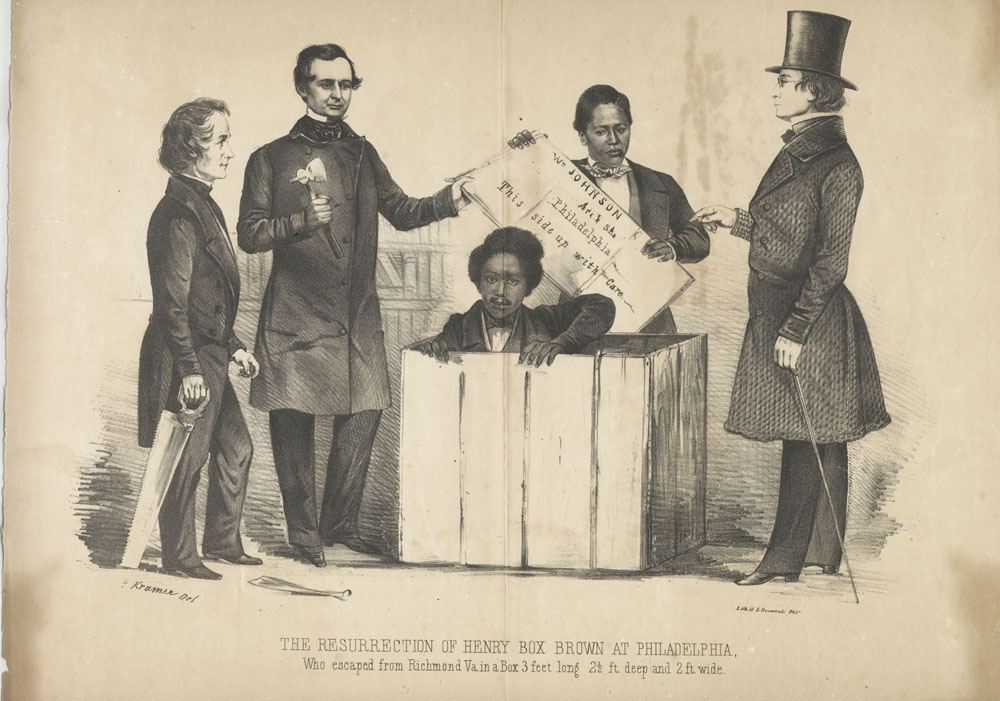Introducing The story
Introduce the concept of slavery in the United States and the work of the Underground Railroad. For more information Visit PBS at http://www.pbs.org/wgbh/aia/home.html .
- Ask, “Is there any such thing as a “freedom box?” Draw a large box on the board. Have students describe what a “freedom box? might look like. As they make these suggestions, have them come to the board and make additions to the box.
- Ask, “What might be inside a “freedom box??” Discuss what freedoms students have that they would include in a freedom box and list these on the board. (You may wish to discuss the freedoms we as Americans enjoy as written in the Declaration of Independence, the U.S. Constitution and the Bill of Rights-e.g., freedom of the press, freedom of speech, freedom to worship as we wish, etc.)
Do a “whip around” by going around the room quickly and have each students complete the phrase, “Freedom is…” (A student may say “pass,” but remember to go back to that student when all the others have responded.)
Ask students to share stories of relatives who came to America in search of freedom and better opportunities.
On the back cover of the book, the author writes,
“Henry “Box? Brown was one of the Underground Railroad?s most famous runaway slaves. And he had the most ingenious idea…”
Take a
Picture Walk (see Appendix) of the book Henry’s Freedom Box, and ask students to determine what Henry’s brilliant idea was.
Reading The Story
Read the story aloud, stopping when appropriate to explore illustrations, address student comments, clarify, predict, and guide their understanding of the story and the values to pursue justice and freedom.
Explain that Henry’s Freedom Box is based on a true story.
- Read the book aloud and discuss the following questions:
- What is slavery? What does it mean to be a slave?
- What were some of the things that slaves were not allowed to do?
- Why do you think slaves weren’t allowed to learn to read?
- What do you think is the worst thing about being a slave?
- Why would Henry risk his life to get to the North?
- Who helped Henry in his escape?
- Why would people risk their lives to help slaves escape, especially when it was against the law?
- What would you like to say to the men who helped Henry?
- Would you consider them to be heroes?
- What character qualities do those who risk their lives to save the lives of others possess?
After The Story
Discuss the Jewish principle, “Justice, Justice Shall You Pursue”-Tzedek, Tzedek Tirdof.
Give examples from Henry’s Freedom Box that demonstrate this principle. Ask students to describe examples that they have seen in their lives where this principle is observes and to describe places or experiences where this principle was or is neglected.
Continue the discussion by adding this Torah quote to the above conversation: “Do not oppress a stranger, for you know the feelings of a stranger, for you were strangers in the land of Egypt” (Exodus 23:9).
- What does this mean?
- Where do you see an example of this in the book?
- What can you do in school to “not oppress a stranger” (e.g., stand up for someone being bullied, help a new student in your class learn his/her way around the school, etc.)?
Henry Brown adopted the name Henry “Box” Brown to celebrate his journey to freedom. A special picture, “The Resurrection of Henry Box Brown at Philadelphia” by Samuel Rowse (1850), recreates the moment when the box was opened and Henry was free. Distribute or display a copy of this picture.

Display or distribute the picture with a caption: “The Resurrection of Henry Box Brown at Philadelphia who escaped from Richmond, Va. in a box 3 ft. long, 2 ½ feet deep and 2 ft. wide.” Using rulers, help students cut pieces of yarn and tape them to the floor to give them a sense of the size of the box.
Have students use the
Visual Thinking Strategy (see Appendix 1) and discuss the picture. Below the picture, have each student create a caption to answer the question, “What do you think were
Henry?s first words after the box was opened and he discovered he had made it safely to Philadelphia?” ( It was reported that he said, "How do you do, gentlemen?" He then sang a psalm from the Bible selected for his moment of freedom).